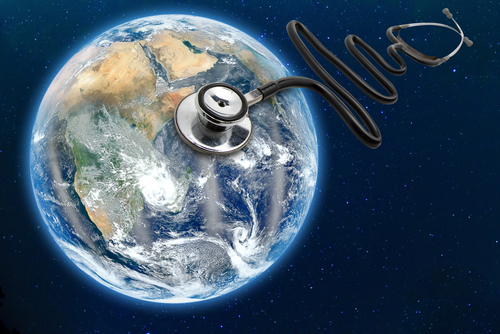WHO Global action plan on physical activity and health 2018-2030 launched
UNI Jun 05, 2018
WHO Director-General Dr Tedros Adhanom Ghebreyesus on June 4, joined Prime Minister António Costa of Portugal to launch the new 'WHO Global action plan on physical activity and health 2018-2030: More active people for a healthier world.'

Regular physical activity is proven to help prevent and treat noncommunicable diseases (NCDs) such as heart disease, stroke, diabetes and breast and colon cancer, say experts. It also helps prevent hypertension, overweight and obesity and can improve mental health, quality of life and well-being. Yet, much of the world is becoming less active.
Physical activity is defined as any bodily movement produced by skeletal muscles that requires energy expenditure. Regular moderate intensity physical activity – such as walking, cycling, or participating in sports – has significant benefits for health. NCDs are responsible for 71 per cent of all deaths globally, including for the deaths of 15 million people per year aged 30 to 70.
WHO has developed a new global action plan to help countries scale up policy actions to promote physical activity. It responds to the requests by countries for updated guidance, and a framework of effective and feasible policy actions to increase physical activity at all levels. Many of Member States have already started activities to promote physical activity in their workplace and other areas, as well as taking “healthy breaks” during the meetings.
The plan sets out four objectives and recommends 20 policy actions that are applicable to all countries and address the cultural, environmental and individual determinants of inactivity. A key feature of this new plan is its call for a ‘’systems-based’’ approach where
effective implementation will require bold leadership combined with cross-government and multisectoral partnerships at all levels to achieve a coordinated, whole-of-system response.
Working in partnerships, WHO will support countries to implement a whole-of-community approach to increase levels of physical activity in people of all ages and abilities. Global, regional and national coordination and capacity will be strengthened to respond to needs for technical support, innovation and guidance.
"Being active is critical for health. But in our modern world, this is becoming more and more of a challenge, largely because our cities and communities aren’t designed in the right ways," said Dr Tedros. "We need leaders at all levels to help people to take the healthier step. This works best at city level, where most responsibility lies for creating healthier spaces."
Worldwide, one in five adults, and four out of five adolescents (11-17 years), do not do enough physical activity. Girls, women, older adults, poorer people, people with disabilities and chronic diseases, marginalized populations, and indigenous people have fewer opportunities to be active.
-
Exclusive Write-ups & Webinars by KOLs
-
Daily Quiz by specialty
-
Paid Market Research Surveys
-
Case discussions, News & Journals' summaries